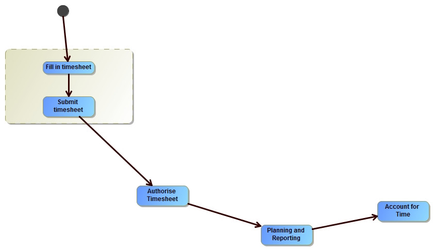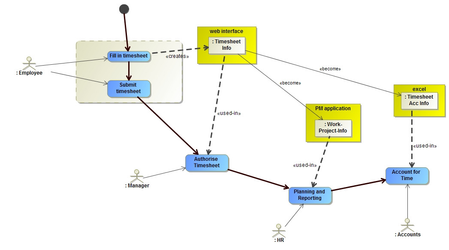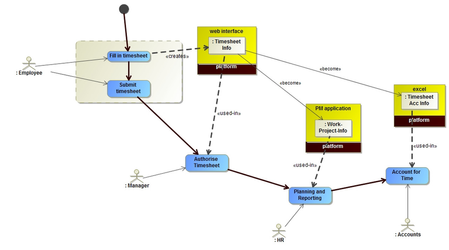...
| Info |
|---|
There is a direct correlation between each of the domains defined in the TOGAF TOGAF® specification, understanding those correlations is key to being able to perform impact analysis, developing road maps that are not vendor lead and managing your risks. |
...
The model above is a simple but effective tool for raising questions that must be answered.
Example of building the correlations
Consider the the following example where your organisation has a timesheet process
Once you have the basics of the process you begin to assign to roles to the activities
The next thing you might consider is the core types of data that need to be captured or modified by the activities. You would also want to try and understand the data transformation, so we have shown this with arcs between the data entities
Now you start to think to yourself "what type of applications do I need to the support the activities and the data?"
And finally you realise that these applications need a platform to execute on
The picture I've painted is a simple one but it should get the point across, there is a symbiotic relationship between all of the domains. Where you start is irrelevant but starting in the business domain does make more sense in the example above. The key to building a model like the one shown above is that underpinning this model is a meta-model that ensures when you refer to a data entity in the business domain it is present in the data domain and in the application domain etc.
Related articles
| Filter by label (Content by label) | ||||||||||||||||||
|---|---|---|---|---|---|---|---|---|---|---|---|---|---|---|---|---|---|---|
|
| Page Properties | ||
|---|---|---|
| ||
|
...




